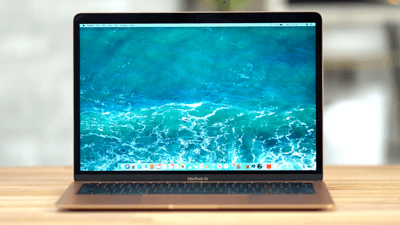6 min to read
M1 MacBook Air Honest Review in 2024! STILL Worth Buying?
Original video published on Jan 5, 2024

The M1 MacBook Air, released in 2020, marked a significant turning point in the laptop industry. With its revolutionary design and performance, it became an instant hit. However, as we move into 2024 and with the advent of the M3 MacBooks, the question arises: Is the M1 MacBook Air still a good purchase? Last year, my answer would have been a resounding yes, but things have changed. Let’s delve into why I believe the M1 MacBook Air may no longer be the best choice for consumers this year.

The Legacy of the MacBook Air
The MacBook Air has been an iconic product since its inception, when Steve Jobs famously introduced the first model by sliding it out of an envelope. Its design emphasized form over function, sacrificing various ports and the CD drive to achieve its incredibly thin and light profile. Fast forward to 2020, and the MacBook Air underwent another significant transformation by switching from an x86 processor to an ARM-based chip, significantly outperforming its predecessors and competitors at a lower price point. Despite these advancements and its current lower price tag of $750 brand new, I find it hard to recommend the M1 MacBook Air in 2024.

Design and Build
The M1 MacBook Air’s design is something I deeply appreciate. Its iconic wedge shape and the beautiful gold color option have a certain allure that even newer models struggle to surpass. The inclusion of the MacBook Air logo inside, now absent in newer versions, adds a touch of nostalgia and brand identity that many fans, including myself, miss.

Audio Quality
When it comes to sound, the M1 MacBook Air’s dual stereo speakers delivered impressive audio quality at its launch. While they still perform decently, the audio experience is outshone by the M2 MacBook Air’s quad-speaker system and the 15-inch variant’s six-speaker setup, offering louder volume and superior bass. Keyboard and Trackpad The M1 MacBook Air’s keyboard and trackpad continue to offer a satisfying user experience. The keyboard feels nice, and although the trackpad is slightly smaller than those found in newer models, it remains effective and responsive.
Display
 Opening the M1 MacBook Air, the bezels around the screen immediately stand out as outdated, especially when compared to the thinner bezels and larger screen real estate of newer models. Despite this, the M1 MacBook Air’s display supports DCI-P3 colors, providing a sharp and vibrant viewing experience, albeit with a lower brightness level compared to its successors.
Opening the M1 MacBook Air, the bezels around the screen immediately stand out as outdated, especially when compared to the thinner bezels and larger screen real estate of newer models. Despite this, the M1 MacBook Air’s display supports DCI-P3 colors, providing a sharp and vibrant viewing experience, albeit with a lower brightness level compared to its successors.

Webcam Quality
The 720p webcam, once acceptable, now falls short against the 1080p cameras in newer models, making it a less appealing choice for those who frequently engage in video calls or meetings.
Battery Life and Charging

The M1 MacBook Air’s battery life was groundbreaking upon its release, offering up to 18 hours of usage on paper. However, real-world usage yields about 8 to 10 hours on a mixed-use basis, slightly less than what you can expect from the M2 variant.

Moreover, the absence of fast charging means longer wait times to get a significant charge, a convenience that newer models offer.

MagSafe and Ports: Missing Convenience


One significant drawback of the M1 MacBook Air is the absence of the MagSafe charging port, a feature reintroduced in newer MacBook models. The convenience of MagSafe, with its easy connect-disconnect mechanism, not only prevents accidental laptop falls but also frees up USB-C ports for other uses, enhancing the device’s utility.
Regarding ports, the M1 MacBook Air offers Thunderbolt 3 capabilities. While sufficient for many, Thunderbolt 4 in newer models provides enhanced connectivity options, making it a more future-proof choice for users requiring high-performance docking solutions.
Display and External Limitations
A notable limitation of the M1 MacBook Air is its support for only one external display, a constraint that persists even in newer M2 and M3 chips. This might not affect everyday users but could be a deal-breaker for professionals requiring multi-monitor setups.
Wi-Fi Capabilities

While the M1 MacBook Air supports Wi-Fi 6, similar to the M2, it falls short of the Wi-Fi 6E capabilities offered by the M3 MacBooks. Although many users might not have compatible routers yet, the enhanced speed and range benefits of Wi-Fi 6E could be significant for those looking to future-proof their technology investment.
Performance: Still Competent



The M1 chip was a game-changer, offering superior performance compared to its Intel predecessors and many Windows alternatives.

It managed to deliver impressive speeds without the need for fan cooling, a feat that highlighted its efficiency. The M1 MacBook Air became the go-to choice for many, evidenced by its high customer satisfaction ratings. However, with the introduction of the M2 and M3 chips, the performance gap has widened, with newer models offering even better efficiency and capabilities.
Price & Value: A Closer Look


The M1 MacBook Air, once celebrated for its groundbreaking performance and high consumer satisfaction, faces a new evaluation in 2024. Yet, with the introduction of the M2 MacBook Air at $899, offering significant improvements like MagSafe, enhanced display, webcam, and speakers, alongside better battery life and performance, the M1’s appeal wanes. This minimal price gap between the M1 and M2 models tilts the scale in favor of the newer, more advanced M2 MacBook Air.
Conclusion: Navigating the Choice

Considering its 2020 release, the M1 MacBook Air’s $750 price tag might seem attractive, but the technological advancements and superior features of the M2 make it a smarter investment for long-term users. For those on a strict budget, a used M1 under $500 could still offer value. Despite the M1 MacBook Air’s iconic status, the advancements in MacBook technology and competitive pricing of newer models suggest it’s time to explore current options.
Your thoughts and experiences are invaluable, feel free to share them in the comments.





Comments